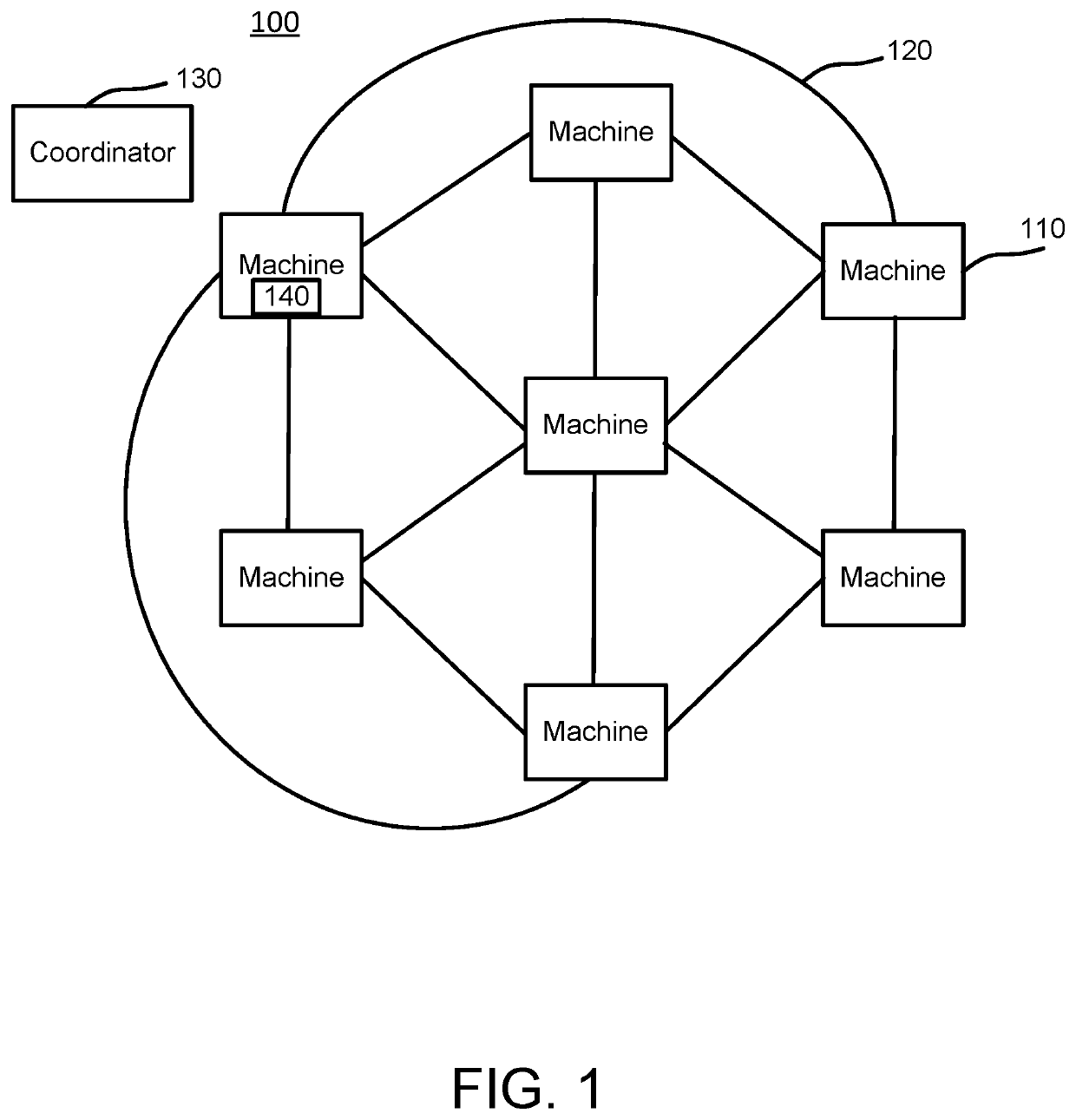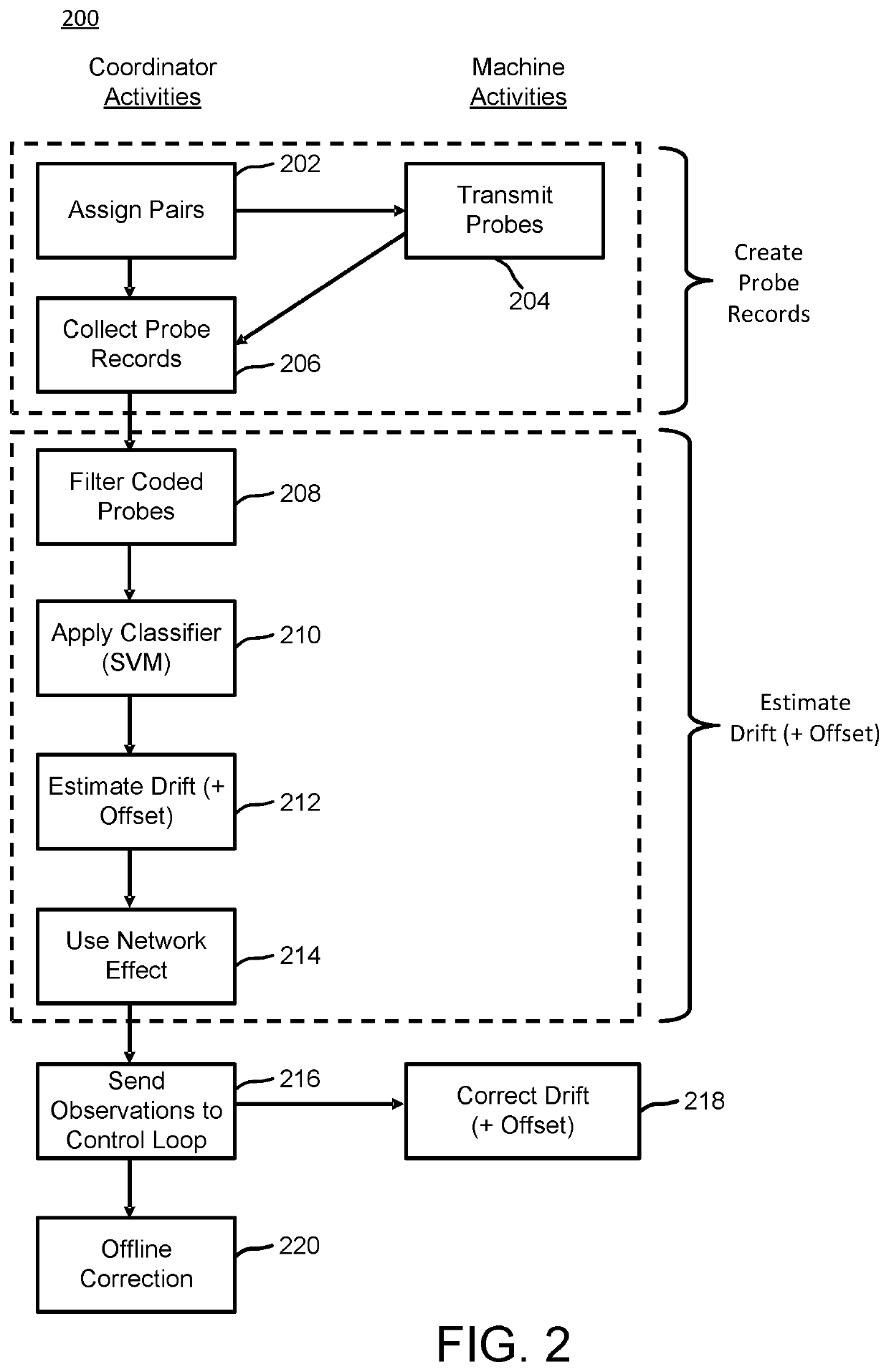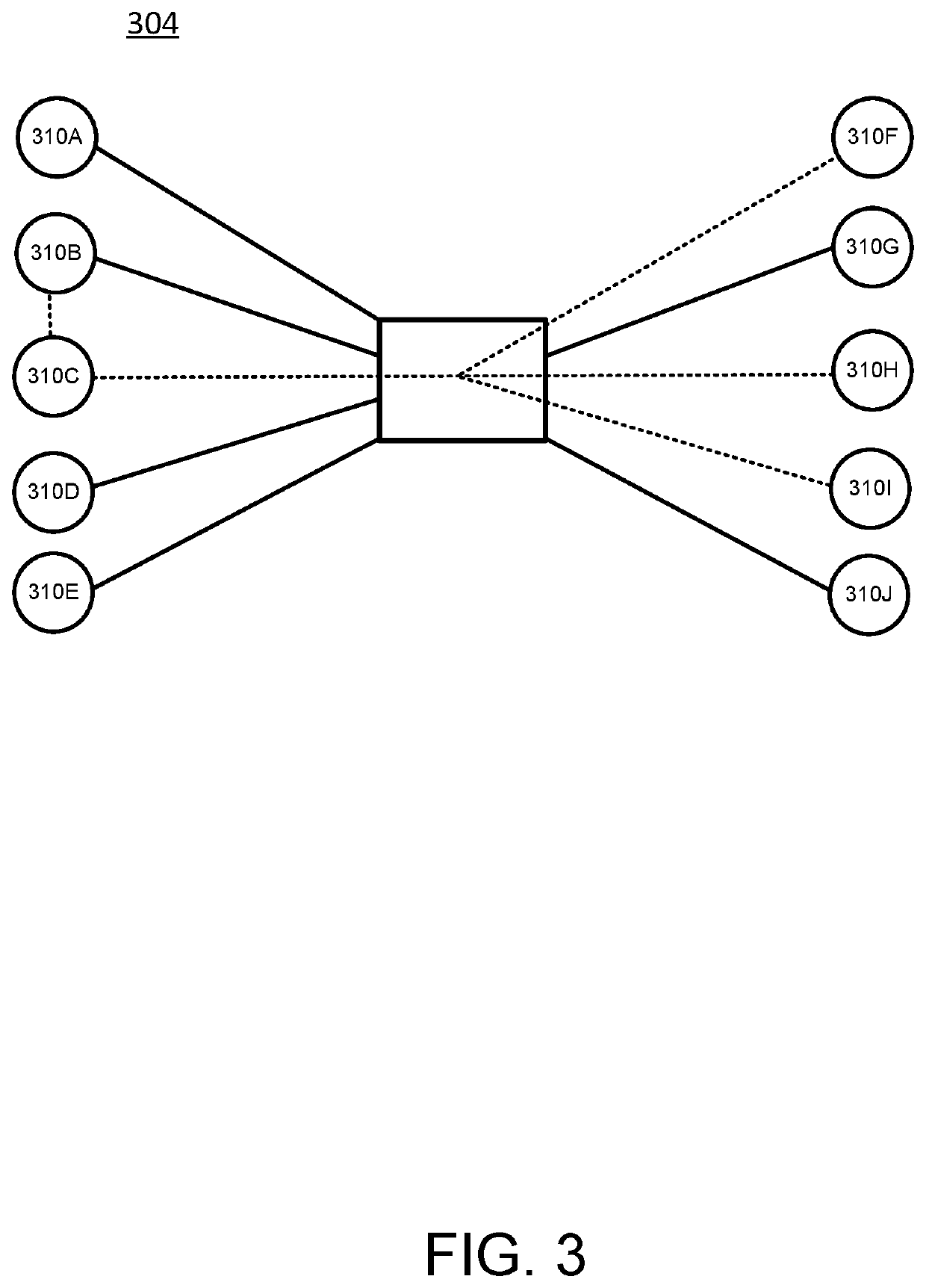Clock syntonization using network effect and/or adaptive stochastic control
a technology of stochastic control and network effect, applied in the field of clock syntonization, can solve the problems of limited clock synchronization accuracy between machines, data center, impose practical limitations in many applications, lack of fairness
- Summary
- Abstract
- Description
- Claims
- Application Information
AI Technical Summary
Benefits of technology
Problems solved by technology
Method used
Image
Examples
Embodiment Construction
[0014]The figures and the following description relate to preferred embodiments by way of illustration only. It should be noted that from the following discussion, alternative embodiments of the structures and methods disclosed herein will be readily recognized as viable alternatives that may be employed without departing from the principles of what is claimed.
[0015]In order to ensure clocks are synchronized to a high degree of accuracy, at least two parameters are controlled on a continuous (e.g., periodic, but ongoing) basis. First, offset, which describes a difference by which two clocks differ in their estimation of time, is determined and adjusted for. For example, if clock A estimates that it is currently 4:05 pm, and clock B estimates that it is currently 4:15 pm, then an offset of 10 minutes exists between clock A and clock B. Second, frequency drift (also referred to as “drift”), which describes a difference in the frequency of two clocks, is determined and adjusted for. Fo...
PUM
 Login to View More
Login to View More Abstract
Description
Claims
Application Information
 Login to View More
Login to View More - R&D
- Intellectual Property
- Life Sciences
- Materials
- Tech Scout
- Unparalleled Data Quality
- Higher Quality Content
- 60% Fewer Hallucinations
Browse by: Latest US Patents, China's latest patents, Technical Efficacy Thesaurus, Application Domain, Technology Topic, Popular Technical Reports.
© 2025 PatSnap. All rights reserved.Legal|Privacy policy|Modern Slavery Act Transparency Statement|Sitemap|About US| Contact US: help@patsnap.com



